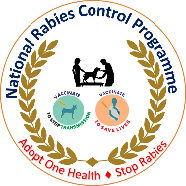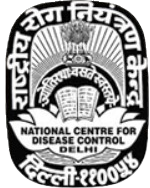Frequently Asked Questions
Rabies is a viral disease transmitted from mammals to humans. There are two clinical manifestations of rabies: furious and paralytic. Furious rabies is the most common form of human rabies. Once symptoms of the disease develop, either form is almost always fatal.
When a person is
bitten or scratched by an animal that has rabies, the virus can enter their
body through the saliva of the infected animal. The virus can also infect a
person if the animal licks an open wound, a cut, or the mucous membranes of the
mouth and nose.
Rabies is transmitted by bite or
scratch of mammals/ warm blooded animals. Dogs are responsible for up to 99% of
human rabies cases, however the virus can be transmitted from the bite of any
rabid animal. Human rabies cases have occurred because of bites from cats,
Monkeys, mongooses, jackals, foxes, wolves and other carnivorous animals. Many
animals will become aggressive and bite when they have rabies, including horses
and donkeys. In animals where biting is not common, such as cattle and buffalo,
transmission can still occur through exposure to saliva. Care should be taken
while examining sick animals that are salivating.
There is no evidence suggesting that Rabies is being
transmitted by bat exposure in India.
The most common route
of transmission is through the saliva of a rabid animal. However, the rabies
virus has also been found, and could possibly be transmitted, through other
bodily fluids such as tears, and nervous tissue. Rabies virus is not found in blood
or faeces. There are no evidence-based reports of human rabies arising from
consumption of milk, including breastmilk, or cooked meat. However, consuming
the meat or milk of a rabid animal is strongly discouraged. Individuals or
professionals who slaughter rabies-infected mammals and handle tissues of rabid
animals may be at risk of contracting the virus through breaks in their skin.
These individuals should use specialized personal protective equipment and
consult infectious disease specialists if they suspect they have been exposed
to rabies infected carcasses.
The risk of Human to
human Rabies transfer is minimal and there are no well documented cases, other
than very rare cases resulting from infected organ transplant. However,
caregivers should be vigilant when looking after patients with rabies and avoid
contact with their saliva and other excretions. Hand washing and good personal
hygiene are of upmost importance when caring for patients with rabies. As per
National Guideline people who have been exposed closely to the secretions of a
patient with rabies may be offered PEP as a precautionary measure.
Yes.
Organs transplanted from rabid organ donors can transmit rabies to the organ
recipient. Individuals with symptoms of encephalitis (inflammation of the
brain) before death should therefore be excluded as organ donors.
Human-to-human transmission has never been confirmed outside the organ
transplantation situation
If a person is bitten by an animal, the following measures should be taken
- Wash wounds and scratches immediately with soap or detergent and flush them thoroughly up to 15 minutes with copious amounts of running water. If soap is not available, flush with water alone. Wound washing is the most effective first-aid treatment against rabies.
- Apply an iodine-containing or anti-viral medication preparation on top of the wound 15 minutes after it has been washed and flushed.
- Take
the person to a health care facility for further assessment and treatment by a
healthcare professional as soon as possible.
Rabies PEP (Post Exposure Prophylaxis) is the emergency treatment given to a person who may have been exposed to rabies virus through a bite or scratch from an infected animal. Rabies PEP consists of the following steps:
Wound treatment: The wound should be washed and flushed with soap and water for at least 15 minutes and disinfected with an antiseptic as soon as possible after the exposure.
Rabies immunoglobulin: This is a human or animal-derived product that contains antibodies against rabies virus. It is given by injection around the wound site to prevent the virus from spreading to the nervous system. It should be given as soon as possible, preferably within 24 hours of exposure, and no later than 7 days after the first dose of vaccine.
Rabies vaccine: This is a safe and effective vaccine that stimulates the body’s immune system to produce its own antibodies against rabies virus. It is given by injection in the arm or leg, usually in a series of four/ five doses on days 0, 3, 7, 14 and 28 after exposure depending on route of administration.
Rabies PEP is very effective in preventing rabies if given correctly and promptly. All three steps of equally importasant.
There
is no laboratory or epidemiological evidence to show that rabies is transmitted
via the consumption of milk or milk products. Therefore, PEP is not required
for consuming any milk or milk products from rabies infected animals.
Consuming the meat from a
rabid animal is strongly discouraged. Although no human cases
have been documented following the consumption of uncooked meat from a rabid
animal, butchering or eating a rabid animal may potentially transmit rabies. If
an exposure occurs, PEP should be initiated. Cooked meat does not transmit
rabies; however, it is not advisable to butcher or consume meat of any kind
from an infected animal. The carcass should be buried or burned if possible,
with advice from a veterinary professional.
Rabies is a potentially
fatal disease and PEP is life-saving. Hence pregnancy is not considered a
contraindication to post exposure prophylaxis. Studies have indicated no
increased incidence of abortion, premature births, or foetal abnormalities
associated with rabies vaccination.
After
entering the human body e.g. through an animal bite, the rabies virus enters
the peripheral nervous system and migrates to the central nervous system
(spinal cord and brain). The infected person exhibits behavioral changes and
clinical signs when the virus reaches the brain. Clinical signs typically
appear 2-3 months after a person has been infected. In exceptional cases,
clinical signs can develop after a few days, or after more than six months,
following an exposure.





Objectives:
The helpline will consist of a team of well-trained agents (Graduate and above) working on inbound and outbound processes, supervised by a Team lead. These agents will be continuously updated with crucial information required to full fill objectives of helpline.
Helpline provides a cloud-based Ticketing system with the features like- generate and resolve tickets, track complete life cycle of the ticket, Real time monitoring & tracking of the ticket, SMS notification to Caller on the ticket status, sharing of Geo location of the vaccination centers. It will also have customized reports with the real time dashboard and Data analytics to understand the pattern. An advanced auto dialer system will be implemented to auto-assign incoming calls to available agents. Helpline also has Quality control mechanism to ensure call quality and appropriate information sharing.
All queries on Rabies prevention and control will be handled by a 16*7 dedicated Rabies helpline, with a dedicated number (15400).
Same helpline also handles queries on snakebite.
Presently this helpline will serve five states: Andhra Pradesh, Madhya Pradesh, Assam, Puducherry, and Delhi.